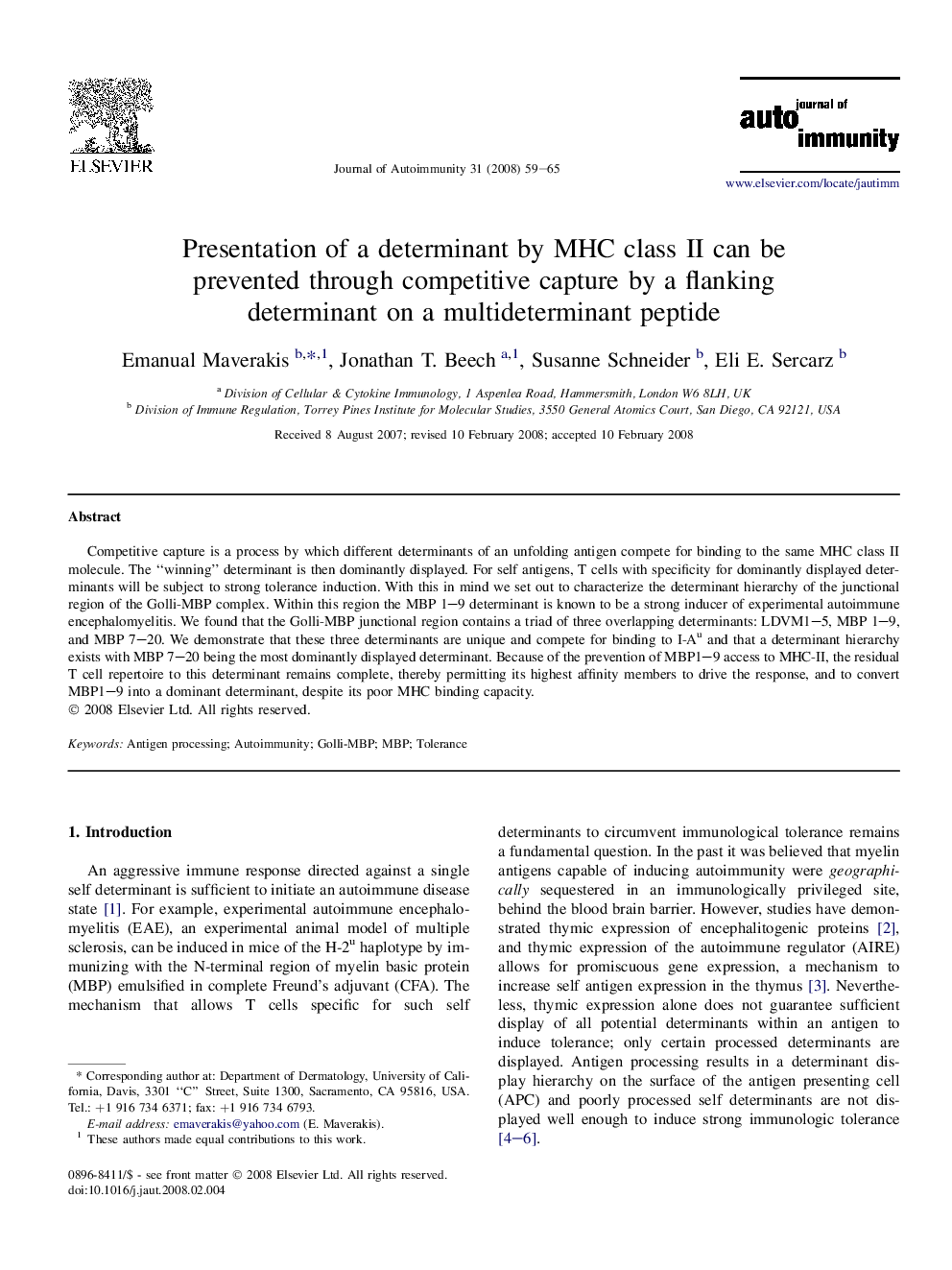| Article ID | Journal | Published Year | Pages | File Type |
|---|---|---|---|---|
| 3368228 | Journal of Autoimmunity | 2008 | 7 Pages |
Abstract
Competitive capture is a process by which different determinants of an unfolding antigen compete for binding to the same MHC class II molecule. The “winning” determinant is then dominantly displayed. For self antigens, T cells with specificity for dominantly displayed determinants will be subject to strong tolerance induction. With this in mind we set out to characterize the determinant hierarchy of the junctional region of the Golli-MBP complex. Within this region the MBP 1-9 determinant is known to be a strong inducer of experimental autoimmune encephalomyelitis. We found that the Golli-MBP junctional region contains a triad of three overlapping determinants: LDVM1-5, MBP 1-9, and MBP 7-20. We demonstrate that these three determinants are unique and compete for binding to I-Au and that a determinant hierarchy exists with MBP 7-20 being the most dominantly displayed determinant. Because of the prevention of MBP1-9 access to MHC-II, the residual T cell repertoire to this determinant remains complete, thereby permitting its highest affinity members to drive the response, and to convert MBP1-9 into a dominant determinant, despite its poor MHC binding capacity.
Related Topics
Life Sciences
Immunology and Microbiology
Immunology
Authors
Emanual Maverakis, Jonathan T. Beech, Susanne Schneider, Eli E. Sercarz,
